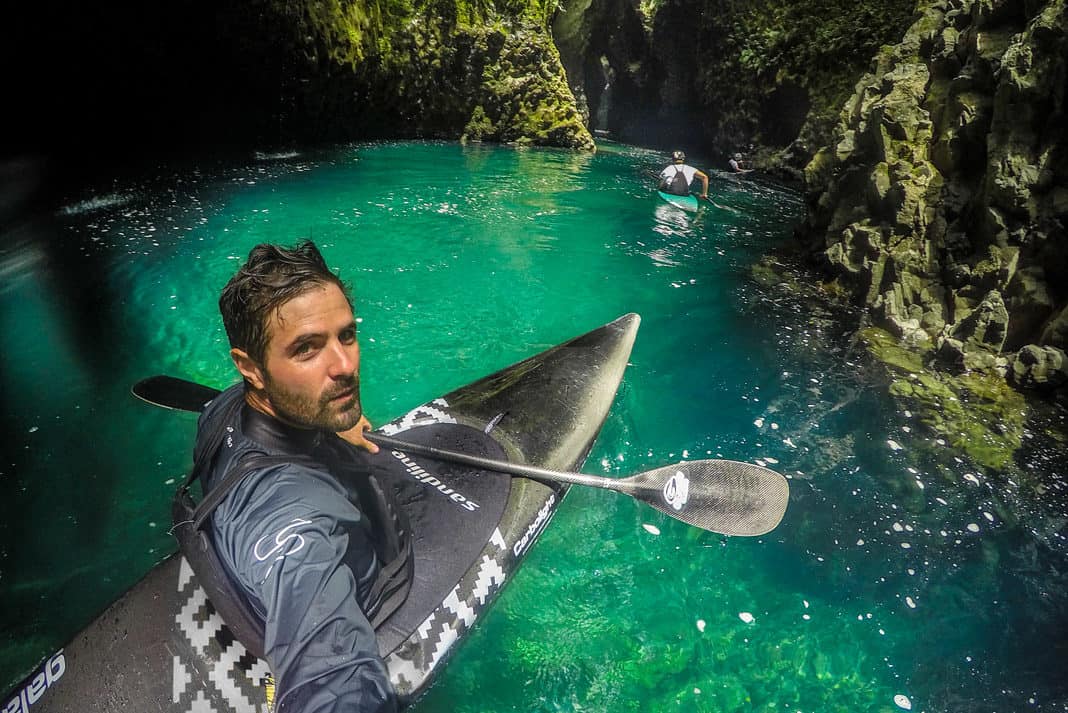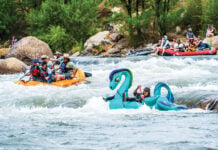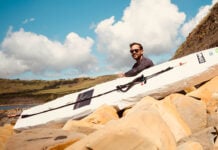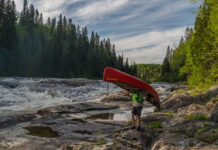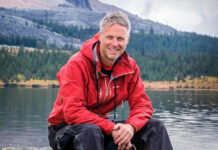If you’re going to commit, make sure you go all the way. This could be Ciarán Heurteau’s maxim, evidenced by the 31-year-old’s rapid transition from competitive slalom racer to expedition creekboater and photographer to award-winning filmmaker.
Growing Up In Paris With French And Irish Parents, Heurteau Joined France’s Oldest Kayak Club At Age Seven. “I was immediately hooked,” says Heurteau, who currently resides in the French Alps. Looking back, the club’s slalom focus was “a way of developing the technical skills to get from point A to point B,” he adds. “It’s how I learned to paddle.”
Heurteau raced for 15 years, representing Ireland on the World Cup slalom circuit, twice cracking the top 10 world rankings. He last raced in 2016.
“My heart wasn’t in it anymore,” he admits. The opportunity to paddle on the world stage was “secondary to the people I met…and all the time on the water spent chasing the best way to go fast.”
Ciaran Heurteau decided he wanted to become a kayaking photographer
In the winter of 2010, Heurteau was training in New Zealand with Kiwi boater Mike Dawson when “things just kind of happened” and he found himself in a helicopter, bound for the South Island’s Kokatahi River.
Heurteau calls it his best and worst trip. He recalls the camaraderie of descending a wild river with friends and employing technical skills he had been practicing all his life in slalom. But unlike a World Cup race, creeking was refreshingly noncompetitive. Simply exploring the river was a revelation for Heurteau.
“It reminded me why I loved kayaking in the first place.”
However, his inaugural river trip ended with an injury. “I went straight into one of the hardest rivers of the South Island,” says Heurteau, who suffered a dislocated shoulder while stuck in a hole. After the incident, Dawson and another boater continued downriver for assistance while Heurteau waited on the river with Johann Roozenburg, in what turned into “a very long and painful 12-hour night.” Recovering from shoulder surgery, Heurteau took stock of his life.
Heurteau Knew He Wanted To Do More Creekboating And Pursue His Passion For Photography. He started a production company called Twelve Productions—in reference to how the number seemed to follow him around in slalom bib numbers and race results. At first, he photographed slalom athletes. A big break came when he was invited to shoot some of the world’s best freestyle and downriver kayakers at the 2012 Whitewater Grand Prix in Chile.
Fast forward to 2016, when Heurteau, Dawson and Spanish paddler Aniol Serrasoles talked about an expedition to Pakistan’s Indus River, to run the Rondu Gorge, an infamous section of one of Asia’s largest rivers. The region’s political instability was just as intimidating as the class V gorge; no one had paddled the Rondu in the last eight years.
The trip came together at the last minute: Heurteau secured his travel visa on a Monday, and the team arrived in Pakistan the following weekend. Heurteau had a general idea of what he wanted to capture in his first documentary film: “The whole Pakistan experience, on and off the water—something raw and beautiful.”
Ciaran Heurteau’s first creekboating experience was in New Zealand
Like His First Experience Creekboating In New Zealand, The Indus Served As A Crash Course. “The whitewater was absolutely insane. Each rapid was the biggest I had ever run,” says Heurteau. “Before dropping in, I would be completely focused on filming and I would miss the conversation with Mike and Aniol while scouting. So after I filmed them running the rapids, I figured out the line by myself and psyched myself up alone at the top.”
Back at home, it took Heurteau a month to edit the raw footage. He says he drew on local Pakistani music to adopt a cinematic style reminiscent of French filmmaker Yann Arthus Bertrand’s theatrical movie, Human. Heurteau’s 26-minute Into the Indus earned Best Whitewater Film honors in the 2018 Paddling Film Festival.
Heurteau hasn’t paddled whitewater since suffering a knee injury in early 2017 and he isn’t certain where the future will take him. But he knows it will take the shape of a river.
“Always follow the path of least resistance,” he says, “and embrace obstacles on your way. No matter how chaotic things might seem, there is always a line.”



